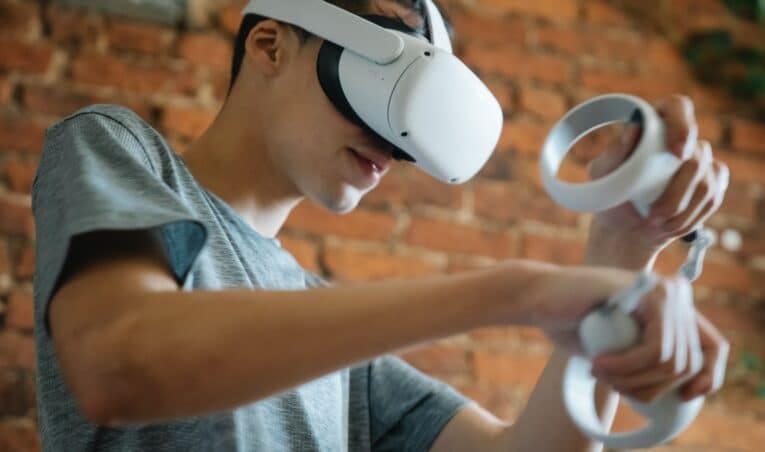
Virtual reality (VR) arcades have become increasingly popular as a form of entertainment, offering immersive experiences that transport users to new worlds and environments. However, the potential benefits of VR arcades extend beyond entertainment, as they can also have a significant impact on physical fitness and exercise. In this article, we’ll explore the various ways VR arcades can contribute to physical fitness and encourage a more active lifestyle.
Active Gaming Experiences
Full-Body Movement
Many VR games and experiences available in arcades require full-body movement, engaging users in physical activity as they navigate virtual environments. These active gaming experiences can help to increase heart rate, burn calories, and improve overall fitness levels, all while having fun.
Improved Coordination and Balance
VR games often require users to perform complex movements and actions, such as dodging obstacles, reaching for objects, or maintaining balance on a virtual platform. These activities can help to improve coordination and balance, both of which are essential components of physical fitness.
Motivation and Engagement
Enjoyable Exercise
One of the primary barriers to regular exercise is a lack of motivation or enjoyment. VR arcades can help to overcome this barrier by providing an enjoyable and engaging form of physical activity. The immersive nature of VR experiences can make exercise feel more like play, encouraging users to stay active and engaged for longer periods.
Goal-Oriented Gameplay
Many VR games feature goal-oriented gameplay, with users working towards specific objectives or targets. This goal-driven approach can help to motivate users to push themselves physically, as they strive to achieve success in the game.
Social Interaction
VR arcades offer a social environment where users can interact with others, share experiences, and even compete in multiplayer games. This social aspect can help to motivate users to stay active and engaged, as they work together or compete against one another in a fun and supportive atmosphere.
Access to Fitness-Focused Experiences
Virtual Fitness Classes
Some VR arcades offer fitness-focused experiences, such as virtual fitness classes or guided workouts. These experiences can provide users with access to professional instruction and guidance, helping them to improve their fitness levels and develop proper exercise techniques.
Sports Simulations
VR arcades can also provide users with access to realistic sports simulations, allowing them to participate in virtual versions of their favorite sports. These simulations can help users to develop sport-specific skills and improve their overall fitness levels, all while enjoying the thrill of competition.
Overcoming Physical Limitations and Barriers
Adaptive Experiences
VR technology can be adapted to accommodate users with physical limitations or disabilities, providing them with access to exercise experiences that may be difficult or impossible in the real world. This adaptability can help to break down barriers to physical activity and encourage a more inclusive approach to fitness.
Reduced Risk of Injury
The virtual nature of VR experiences can help to reduce the risk of injury associated with physical activity, as users can participate in sports and exercise without the physical impact of real-world environments. This reduced risk can make exercise more accessible and appealing to users who may be hesitant to engage in physical activity due to concerns about injury.
The Potential for Long-Term Fitness Benefits
Habit Formation
By providing an enjoyable and engaging form of exercise, VR arcades can help users to develop positive habits around physical activity. Over time, these habits can translate to increased participation in real-world exercise and improved overall fitness levels.
Cross-Training Opportunities
The diverse range of experiences available in VR arcades can provide users with opportunities for cross-training, engaging in various forms of physical activity to improve overall fitness and reduce the risk of injury. This variety can help to keep users engaged and motivated, as they explore new and exciting ways to stay active.
Challenges and Considerations
Accessibility and Cost
While VR arcades offer numerous benefits for physical fitness and exercise, accessibility and cost can be potential barriers for some users. Depending on location, there may not be a VR arcade nearby, and the cost of visiting a VR arcade can be prohibitive for some individuals.
Overreliance on Technology
While VR arcades can provide a valuable supplement to traditional forms of exercise, it’s essential not to become overly reliant on technology for physical activity. Real-world exercise offers numerous benefits that cannot be replicated in a virtual environment, and a balanced approach to fitness should include a combination of both virtual and real-world activities.
Virtual reality arcades have the potential to make a significant impact on physical fitness and exercise, offering engaging and enjoyable experiences that encourage users to stay active. From full-body movement and improved coordination to motivation and social interaction, VR arcades can provide a unique and effective approach to physical activity. By overcoming barriers to exercise and promoting long-term fitness habits, VR arcades can contribute to a healthier and more active society.

